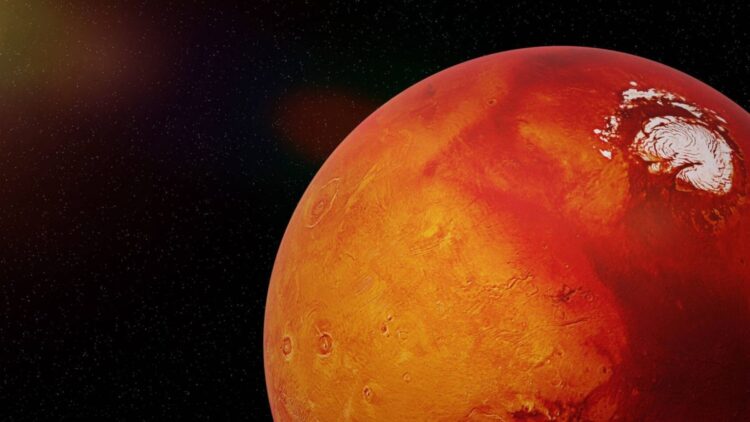One of the major theories of planetary science is the theory of Martian destruction. The red planet has radiation levels that could only be the result of an atomic explosion. That is why it was believed that millions of years ago there was life on Mars, which was destroyed by nuclear weapons. However, NASA has explained that this is not true. It explains how the levels present on Mars respond to the chemical reactions of the elements on the planet.
Mars, the Red Planet
Known as the Red Planet, it is the fourth planet in the Solar System. It is cold, rocky, with a desert surface and a very thin atmosphere. One of the most deeply rooted beliefs is that millions of years ago, Mars was similar to Earth, with the presence of water and living organisms. To study it, NASA has sent several probes that have shed some light on the matter. In one of these expeditions, it was shown that the levels of xenon-129 isotope were much higher than those found to date anywhere in space. Levels that could only correspond to the explosion of a thermonuclear bomb. How is this possible?
Dr John Brandenburg’s theory
Some renowned scientists began to support this theory of the bombardment of Mars. One of them was plasma physicist John Brandesburg. After analyzing the data collected by the 2001 Mars Odussey orbiter, he began to advocate the existence of a natural reactor on Mars. The NASA orbiter allowed him to observe the presence of concentrations of radioactive uranium, thorium and potassium in only two areas.
In 2014, a paper was published (not peer-reviewed), which no longer spoke of one, but of two thermonuclear devices on Mars. This idea was supported by the presence of high isotope values of xenon-129, and argon-40, with values 3,000 times higher than those of argon-36. According to the theory, these devices would have wiped out the planet’s primitive civilizations. Based on the regions where these anomalies are found, they named the hypothetical civilizations as Cydonians and Utopians.
Evidence of Martians on Mars
Proponents of this theory saw the gates of heaven open when this discovery was made. On one of the Viking I reconnaissance missions in 1976, photos were taken of the Cydonia region (“the Face on Mars”). In it, a kind of man-made megalithic structure could be seen. There was also talk of pyramids on the surface of the red planet, which further supported the theory.
Maybe next time
However, reality is often simpler. NASA has refuted this theory by providing scientific evidence that explains all these processes. As for the supposed pyramids and structures, they are nothing more than optical illusions of the interaction of light and shadows with the surface of the planet. On the other hand, it has been explained that the apparently unusual values also have a reason. It was possible to collect data on krypton and xenon gases in the atmosphere of Mars thanks to SAM (Sample Analysis on Mars).
With these results a paper was published in Earth and Planetary Science Letters. It explains how the elevated presence of isotopes responds to neutron capture. Barium or bromine atoms are hit by cosmic rays passing through the gift, causing the loss of their neutrons. This is how they are transferred to xenon or krypton. Mars does not have an electromagnetic shield to protect it from the Sun’s solar winds, so its constituent materials have been lost over time. It is estimated that around 65% to 80Ç% has been lost in space, with no possibility of being able to study it.
It was fun to think for a moment that there was no longer any doubt about the existence of intelligent life on our neighboring planet, but it seems that we have to wait until the next theory has no scientific explanation and thus, we can let our imagination run wild.
